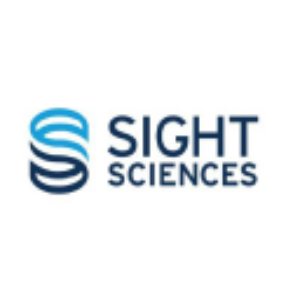Sight Sciences Announces the Publication of Large-Scale, Real-World MIGS Study Demonstrating the Comprehensive Aqueous Outflow Restorative Procedure with OMNI® Surgical System Technology is Effective at Lowering Both IOP and IOP Reducing Medications at 2 Years in Patients with Glaucoma
The efficacy of the three most commonly used MIGS technologies in combination with cataract surgery and cataract surgery alone were evaluated and compared in over 100,000 glaucoma patient eyes
MENLO PARK, Calif., April 10, 2024 (GLOBE NEWSWIRE) -- Sight Sciences, Inc. (Nasdaq: SGHT) (“Sight Sciences” or the “Company”), an eyecare technology company focused on developing and commercializing innovative, interventional technologies intended to transform care and improve patients’ lives, today announced the results as published in the American Journal of Ophthalmology (“AJO”) International of the large scale, comparative real-world clinical outcomes study of patients treated by three leading, minimally invasive glaucoma surgery (“MIGS”) technologies.
Using the American Academy of Ophthalmology IRIS® Registry (Intelligent Research in Sight), the largest specialty society clinical data registry in all of medicine and the first comprehensive eye disease clinical registry in the United States, this large-scale MIGS study evaluated long-term 2-year post-surgical outcomes among patients with primary open-angle glaucoma (“POAG”) treated with the three most commonly used FDA-approved/cleared ab interno MIGS devices in the U.S. (OMNI Surgical System (“OMNI”), Hydrus® Microstent, and iStent inject®) combined with cataract surgery, as well as for cataract surgery alone.
OMNI facilitates a unique implant-free, ab interno procedure that comprehensively addresses the three primary areas of resistance in the conventional outflow pathway. OMNI technology has been cleared by the FDA for canaloplasty followed by trabeculotomy to reduce intraocular pressure in adult patients with primary open-angle glaucoma.
Baseline Patient Characteristics:
- The entire study cohort consisted of 77,391 patients with glaucoma and 109,745 glaucomatous eyes
- 6,632 patients and 9,000 eyes received a MIGS procedure in combination with cataract surgery, and the remainder received cataract surgery alone
- The four cohorts had generally similar baseline characteristics in terms of intraocular pressure (“IOP”) and mean number of IOP-lowering medications (see table below)
- The overall population was divided into two subgroups depending on the baseline, pre-surgical lOP; > 18 mmHg and ≤ 18 mmHg. The primary treatment goal for the high baseline IOP group (> 18mmHg) was IOP reduction, with a secondary goal to reduce medication burden. The primary treatment goal for the low baseline IOP group (< 18mmHg) was to reduce medication burden.
| Baseline | Group 1 Pre-op (> 18mmHg IOP) | Group 2 Pre-op (≤ 18mmHg IOP) | ||
| Mean IOP (mmHg) | Number of IOP-Lowering Medication Classes | Mean IOP (mmHg) | Number of IOP-Lowering Medication Classes | |
| OMNI Surgical System | 22.5 | 1.95 | 14.1 | 2.01 |
| Hydrus Microstent | 22.5 | 1.89 | 14.2 | 1.89 |
| iStent inject | 22.2 | 1.58 | 14.4 | 1.58 |
| Cataract-Surgery Alone | 22.8 | 1.60 | 14.5 | 1.62 |
Clinical Outcomes:
- At 24 months, high baseline IOP (>18 mmHg) patients who received the outflow procedure using OMNI technology had:
- the greatest numerical reduction in IOP, and
- the greatest numerical reduction in medication use
- At 24 months, low baseline IOP (≤18 mmHg) patients who received the outflow procedure using OMNI technology had:
- the greatest numerical reduction in IOP, and
- a statistically significantly greater mean medication use reduction compared to all other treatment groups
| Post Treatment @ 24 Months | Group 1 > 18mmHg IOP Treatment Goal: IOP and Medication Reduction | Group 2 ≤ 18mmHg IOP Treatment Goal: Medication Reduction | ||
| Mean Reduction in IOP mmHg (% Change From Baseline) | Mean Medication Class Reduction | Mean Reduction in IOP mmHg (% Change From Baseline) | Mean Medication Class Reduction | |
| OMNI Surgical System | -6.64 ( | -1.34 | -0.47 ( | -1.42 |
| Hydrus Microstent | -5.71 ( | -1.20 | +0.03 ( | -1.18 |
| iStent inject | -4.96 ( | -0.86 | -0.17 ( | -0.95 |
| Cataract-Surgery Alone | -5.55 ( | -0.67 | -0.07 ( | -0.65 |
“Consistent with our many prior published studies, this large-scale, real-world MIGS dataset from the IRIS Registry, as analyzed by Verana Health® and published in a top peer-reviewed journal, corroborates that the OMNI procedure is efficacious as it delivers clinically meaningful and durable reductions in both intraocular pressure and medication use at two years. OMNI technology was designed with the goal of restoring the natural outflow process of the eye by addressing the three areas of resistance associated with primary open-angle glaucoma. We are excited to see that large-scale comparison studies of MIGS standards-of-care continue to corroborate the robust IOP reduction and medication reduction associated with the comprehensive OMNI outflow procedure,” said Paul Badawi, co-founder and CEO of Sight Sciences. “I’d also like to thank the team at Verana Health and the American Academy of Ophthalmology for making critical, real-world, large-scale, clinical outcome information in the IRIS Registry available for all stakeholders, including eyecare providers, payors, industry, and researchers.”
Authors and affiliations:
Michael Mbagwu (Stanford University School of Medicine, Palo Alto, CA), Richard Chapman (Verana Health, San Francisco, CA), Kristian Garcia Aesara, Chapel Hill, NC, Aesara, Chapel Hill, NC 3, Jaime E Dickerson Jr (Sight Sciences, Menlo Park, CA, and North Texas Eye Research Institute, University of North Texas Health Science Center, Fort Worth, TX), and Louis B Cantor (Indiana University School of Medicine, Department of Ophthalmology, Indianapolis, IN).
Paper Reference:
Michael Mbagwu, Richard Chapman, Kristian Garcia, Cristina Masseria, Jaime E Dickerson, Louis B Cantor, Ab Interno Minimally Invasive Glaucoma Surgery Combined with Cataract Surgery and Cataract Surgery Alone: IRIS® Registry Study, AJO International, 2024,100015, ISSN 2950-2535.
About Sight Sciences
Sight Sciences is an eyecare technology company focused on developing and commercializing innovative and interventional solutions intended to transform care and improve patients’ lives. Using minimally invasive or non-invasive approaches to target the underlying causes of the world’s most prevalent eye diseases, Sight Sciences seeks to create more effective treatment paradigms that enhance patient care and supplant conventional outdated approaches. The Company’s OMNI® Surgical System is an implant-free glaucoma surgery technology (i) indicated in the United States to reduce intraocular pressure in adult patients with primary open-angle glaucoma (“POAG”); and (ii) CE Marked for the catheterization and transluminal viscodilation of Schlemm’s canal and cutting of the trabecular meshwork to reduce intraocular pressure in adult patients with open-angle glaucoma. Glaucoma is the world’s leading cause of irreversible blindness. The Company’s TearCare® System technology is 510(k) cleared in the United States for the application of localized heat therapy in adult patients with evaporative dry eye disease due to meibomian gland dysfunction (“MGD”) when used in conjunction with manual expression of the meibomian glands, enabling clearance of gland obstructions by physicians to address the leading cause of dry eye disease. The Company’s SION® Surgical Instrument is a manually operated device used in ophthalmic surgical procedures to excise trabecular meshwork. Visit sightsciences.com for more information.
About Verana Health
Verana Health® (“Verana”) is revolutionizing patient care and clinical research by unlocking the potential of real-world data. Verana has an exclusive real-world data network of 90 million de-identified patients from more than 20,000 clinicians, stemming from its exclusive data partnerships with three leading medical societies. Verana harnesses deep expertise, secure advanced technology, and direct access to exclusive, near real-time data sources to deliver actionable quality insights that help companies make sense of the data. Visit veranahealth.com for more information.
Sight Sciences and TearCare are trademarks of Sight Sciences registered in the United States. OMNI and SION are trademarks of Sight Sciences registered in the United States, European Union and other territories.
Hydrus is a registered trademark of Alcon Vision LLC.
iStent inject is a registered trademark of Glaukos Corporation.
IRIS is a registered trademark of the American Academy of Ophthalmology.
Verana Health is a registered trademark of Verana Health.
© 2024 Sight Sciences. All rights reserved. 04/2024 OM-3150-US.v1
Media contact:
pr@SightSciences.com
Investor contact:
Philip Taylor
Gilmartin Group
415.937.5406
Investor.Relations@SightSciences.com








